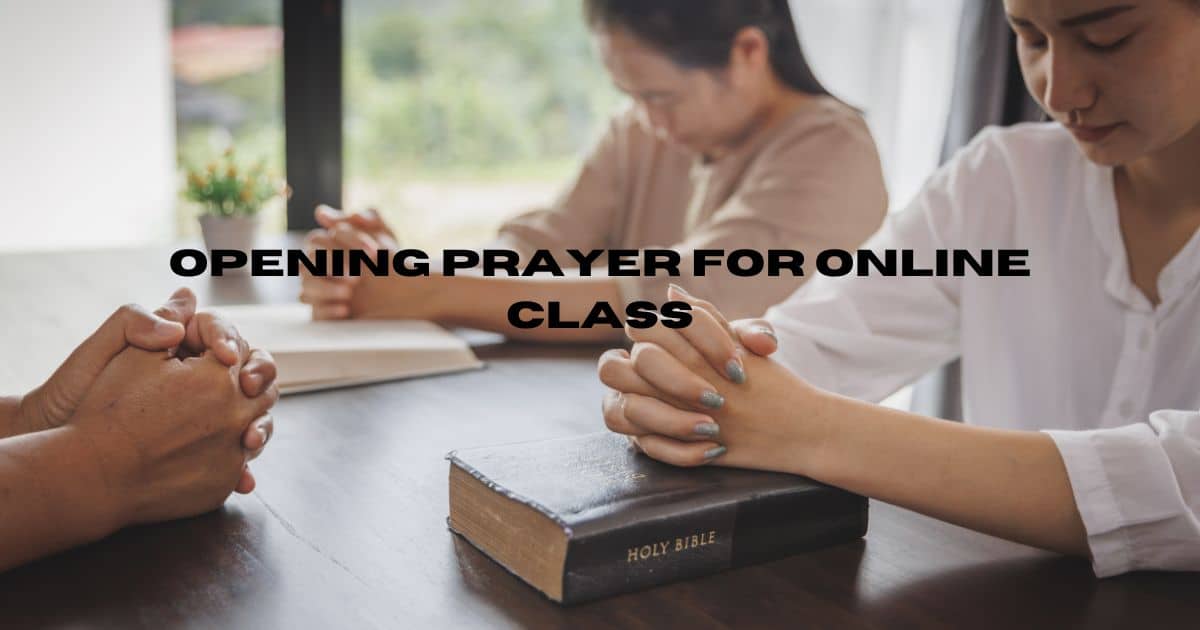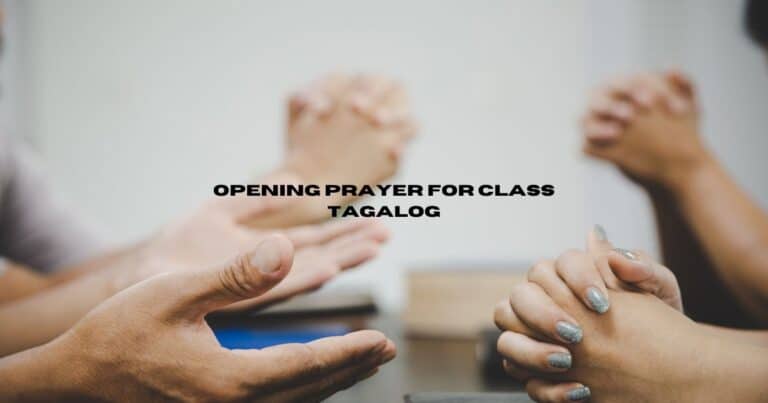“Opening prayer for online class” is a cherished tradition embraced by educational institutions across the globe. This sacred moment serves as a bridge between daily activities and academic endeavors, offering students and teachers alike a chance for contemplation and unity. Though its origins lie in religious customs, this practice has adapted to embrace various belief systems and cultural perspectives. In the context of virtual learning, an opening prayer for online class provides a sense of connection and focus at the start of the lesson. This article delves into the importance, advantages, and key aspects of implementing prayer before class in educational environments.
Historical Context
The custom of prayer before class has ancient origins, with early scholars seeking divine wisdom and enlightenment before pursuing knowledge. Throughout history, this practice has merged with numerous spiritual and cultural customs. In contemporary education, classroom prayer maintains its relevance, though it has evolved to become more encompassing and adaptable.
Opening Prayer for Class
Almighty Creator, we dedicate our class session to you today. Guide us to be attentive listeners, absorbing the knowledge our teacher shares. Help us value and appreciate the dedication shown in nurturing our minds and spirits.
Benefits of Prayer Before Class
Prayer before class can foster a sense of calm, focus, and mindfulness, enhancing students’ overall learning experience.
Mental Preparation
Starting class with prayer provides a valuable opportunity for students to achieve mental clarity and focus their attention on upcoming lessons. This moment of mindful preparation enhances their ability to concentrate and process information, potentially leading to better academic outcomes.
Spiritual Grounding
Many students find that prayer before class provides a vital spiritual anchor and connection to their faith or beliefs. Through either traditional prayer or personal meditation, this practice cultivates inner stability and emotional strength, essential qualities for managing academic pressures.
Community Bonding
The act of praying together before class creates a unified atmosphere among students and teachers. This shared experience promotes understanding, compassion, and mutual respect, helping to build a stronger, more connected learning community.
Different Forms of Prayer
Classroom prayer can manifest in multiple ways, accommodating the varied spiritual and personal preferences within the educational community. Some might prefer traditional religious invocations, while others may choose secular meditation or positive affirmations. The goal is to maintain an open, respectful environment where everyone feels comfortable expressing their beliefs.
How to Incorporate Prayer Before Class
To incorporate prayer before class, create a respectful and inclusive environment by allowing time for a brief prayer, providing options for non-participants, and encouraging mindfulness or reflection to start the lesson with focus and positivity.
Establishing a Routine
Teachers can seamlessly integrate prayer by creating a regular practice of beginning each class with a brief period of reflection or contemplation. This consistent approach helps create an atmosphere conducive to learning and encourages students to approach their studies thoughtfully.
Inclusive Practices
When implementing prayer before class, it’s crucial to consider and respect all religious and cultural traditions represented in the classroom. Teachers should provide alternatives for students who may prefer not to participate in conventional prayer activities.
Addressing Diverse Beliefs
Maintaining open channels of communication is essential when managing different beliefs and preferences regarding classroom prayer. Teachers should encourage students to share their thoughts and experiences, fostering an environment of mutual understanding and respect among peers.
Addressing Challenges and Concerns
Addressing challenges and concerns involves acknowledging diverse beliefs, ensuring voluntary participation, maintaining respect for all students, and finding a balance between spiritual practices and academic focus in a way that promotes inclusivity and sensitivity.
Separation of Church and State
When incorporating prayer before class in public educational institutions, strict adherence to legal guidelines concerning church-state separation is paramount. Educational professionals must ensure that any spiritual practices remain voluntary and inclusive, carefully avoiding the endorsement or promotion of specific religious beliefs or denominations.
Respect for Different Beliefs
Creating an environment that honors and embraces diverse beliefs and worldviews regarding pre-class prayer is crucial. Teachers must remain vigilant in protecting students’ individual rights and personal choices, ensuring that no student experiences pressure or feels excluded based on their religious convictions or philosophical standpoints.
Legal Considerations
Educators must stay well-informed about the legal framework governing prayer before class, particularly within public education settings. Seeking guidance from legal professionals or school leadership can ensure compliance with applicable regulations while safeguarding individual rights and liberties.
Success Stories and Testimonials
Many educators and learners have come forward with inspiring accounts and positive feedback regarding the transformative impact of prayer before class. These testimonials highlight improvements in academic achievement and overall well-being, with many crediting their educational success to engaging in prayer or mindfulness practices before learning sessions.
Conclusion
Pre-class prayer stands as an influential instrument for enriching the educational journey, fostering mental preparation, spiritual connection, and communal unity. Through the implementation of inclusive approaches and recognition of diverse beliefs, educators can cultivate a nurturing learning space where every student feels acknowledged and respected.
FAQs
Is prayer before class allowed in public schools?
Public schools must operate within legal parameters regarding church-state separation, though certain forms of voluntary prayer or meditation may be acceptable when conducted inclusively and respectfully.
How can educators ensure inclusivity when incorporating prayer?
Teachers can maintain inclusivity by providing various options for prayer or reflection, honoring diverse beliefs, and establishing a welcoming atmosphere where all students feel valued.
Can students choose not to participate in class prayers?
Absolutely. Students maintain the right to decline participation in class prayers or religious activities. Teachers must honor individual beliefs and choices, ensuring no student faces coercion or pressure to participate.
Are there any scientific studies supporting the benefits of prayer before class?
While direct research on pre-class prayer benefits may be limited, extensive studies on mindfulness and meditation demonstrate positive impacts on cognitive abilities, stress management, and general wellness, potentially enhancing academic performance.
What are some alternative options for students who prefer not to participate in prayer?
Students may engage in silent reflection, mindfulness exercises, or personal affirmations. Teachers can offer non-religious alternatives that promote concentration, relaxation, and mental preparation before class.





